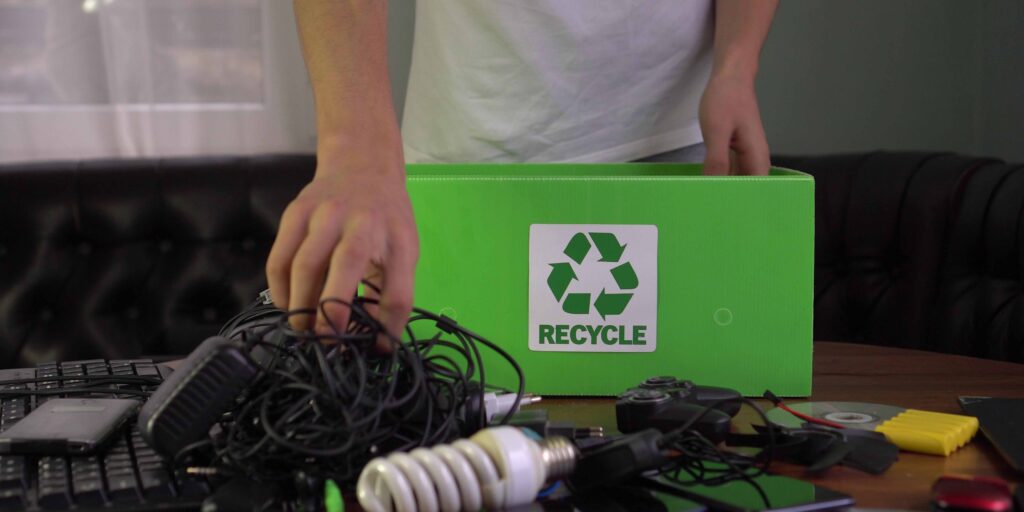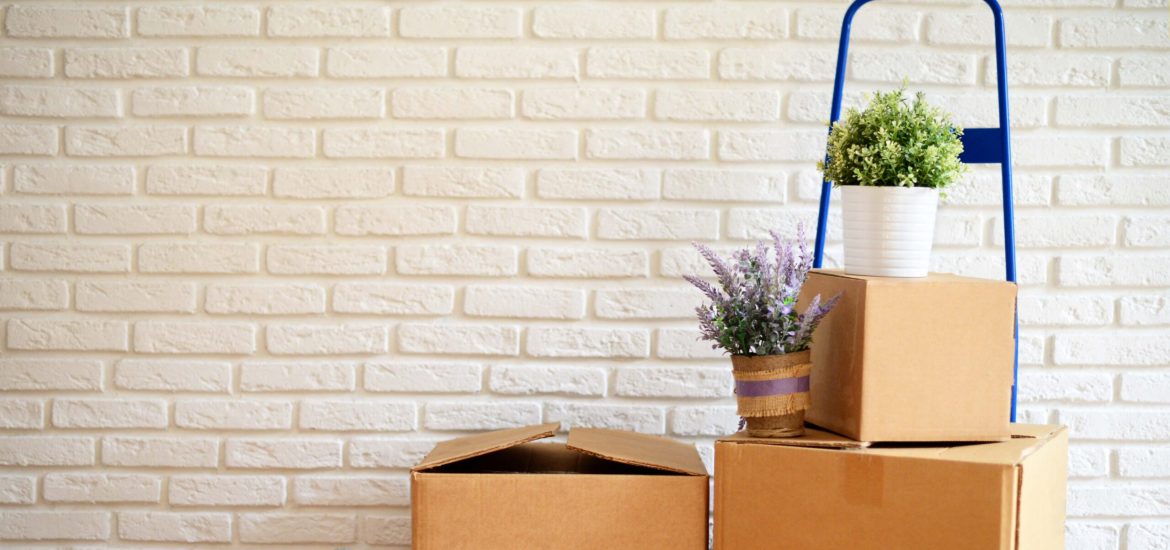We all know moving can be stressful. Before you think about throwing items into the dumpster that will eventually find their way into our local landfills, we have some tips to make your move more efficient (and hopefully more stress-free)! The key is to stay organized and plan ahead.
Bedrooms & Home Offices
Donate your bedroom and home office furniture to your local thrift store and call to confirm if it offers bulky item pick-up. Bed mattresses and bed frames should be recycled through a participating Bye Bye Mattress recycling program location.
Donate clothes that are in a good/reusable condition to a local thrift store. Clothes, sheets, towels, etc. that are torn, stained, or old, should be recycled through a local textile recycling program.
Electronics that are no longer working (also known as electronic waste or e-waste) include items such as televisions, radios, telephones, cell phones, and printers. Many recycling locations will accept electronic waste at no cost and collection events are available for select neighborhoods on specific dates and times. Working electronics should be taken to a local thrift store.
Tip: Electronic waste does not include fluorescent light bulbs/tubes (they contain mercury) and any type of batteries.
Bonus Tip: Remove all sensitive information from hard drives before donating or recycling.

Kitchen
Working or newer appliances can be taken to organizations that reuse or resell appliances like Habitat for Humanity ReStore locations. For any non-working appliance, drop-off at a local scrap metal recycler.
If items like dishes, pots, pans, and silverware are in reusable/good condition, donate them to a local thrift store. If the item is stainless steel and is old/overused, take it to a scrap metal recycler.
Cleaning products like all-purpose cleaners, disinfectants, degreasers and stain remover are considered household hazardous waste and should be disposed of at a collection facility.
All non-perishable food should be dropped off at a local food bank.

Bathroom
Loose medication can be put into plastic bags then deposited at kiosks located at participating San Diego County Sheriff’s departments. Please ensure any liquid medication is enclosed in secure containers before depositing and please remove any personal information from medicine bottles. Prescription drug take back days occur twice a year. Permanent drop-off locations are available at participating sheriff’s stations or police departments.
Needles/sharps should be transported to a proper collection center in a rigid, puncture resistant, and tightly sealed container. Some examples of proper containers include bleach bottles, liquid detergent bottles, or coffee cans with lids. Containers should be no larger than 2 liters or 1/2 gallon. Label the container “Needles” or “Sharps” before disposing of it at an approved residential needles/sharps collection drop box or at your local household hazardous waste collection facility.
Garage/ Shed
Hand tools and power tools can be donated to a local thrift store or recycled at participating locations. Certain gardening tools powered by gasoline such as a lawnmower will have to be completely drained before donating or recycling.
The following products typically found in the household like gardening chemicals and automotive fluids are considered household hazardous waste:
- Fertilizer
- Pesticide
- Herbicide
- Insecticide
- Motor oil
- Gasoline
- Antifreeze
- Batteries
- Flight bulbs/tubes
- Paint Household hazardous waste should be taken to a designated household hazardous waste collection facility.

Additional Information
Looking to sell or give away an item? Donating and recycling are not the only options! Residents can host a garage sale or attend a swap meet to sell or trade items. Many websites and apps also allow users to post items to sell or to give away for free, including:
Tips on how to reduce the need for cardboard boxes
- Remember to pack up your belongings in containers you already have such as reusable bags, dresser drawers, or suitcases
- Start saving up cardboard boxes a couple of months ahead of time.
- Check some of the donation sites listed above to look for any additional cardboard boxes.
- Any reusable cardboard boxes should be donated. Find a location at WasteFreeSD.org
- Remember to recycle leftover cardboard boxes in the blue recycling bin. Please break down the box before recycling it.
Plan early
- All household hazardous waste collection facilities require proof of residency and an appointment. Have an inventory of everything you plan to drop off, including quantities and the condition of your items, before calling to make an appointment.
- Some thrift stores offer free pick-up, but there may be a wait time of up to a month to receive service. Plan accordingly.
- Remove all personal information from electronics, prescription medication bottles, sensitive documents, etc., before donating or recycling.
To review a list of what can go in the curbside recycling bin, find recycling centers, donation locations, and local household hazardous waste collection facilities, or for waste reduction guides, visit WasteFreeSD.org.


